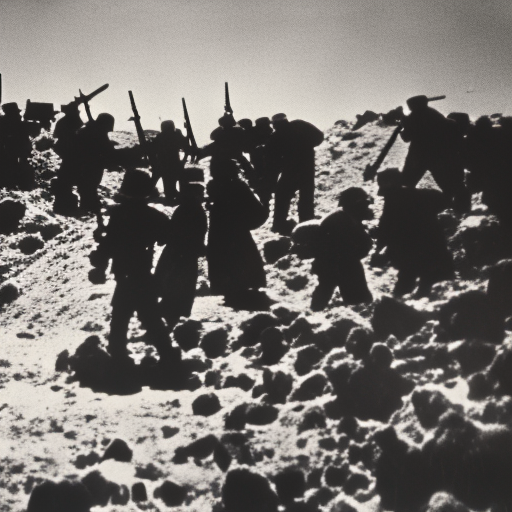Battle of El Guettar: A Turning Point in World War II
The Battle of El Guettar was a significant military engagement that took place during World War II in North Africa. It occurred from March 23 to April 7, 1943, and was fought between the Allied forces, primarily composed of American troops, and the Axis forces led by the German Afrika Korps.
Background:
By early 1943, the Allies had gained momentum in North Africa, pushing the Axis forces back towards Tunisia. The Battle of El Guettar was part of the larger Tunisian Campaign, which aimed to defeat the Axis powers and secure control of North Africa.
The Strategic Importance of El Guettar:
El Guettar was a small town located in southern Tunisia, near the border with Algeria. It was strategically important because it lay on the route to the key city of Gabès, which was a major supply base for the Axis forces. Capturing El Guettar would not only disrupt Axis supply lines but also provide a launching point for further advances towards Tunis.
The Battle Begins:
On March 23, 1943, the Allied forces launched their attack on El Guettar. The initial assault was carried out by the U.S. 1st Armored Division, supported by artillery and air support. The German defenders, under the command of General Hans-Jürgen von Arnim, put up a fierce resistance, utilizing their well-fortified positions and the rugged terrain to their advantage.
The Struggle for Hill 369:
One of the key objectives for the Allies was the capture of Hill 369, a dominant feature overlooking El Guettar. The hill was heavily defended by the Germans, who had dug in and fortified their positions. The Allies faced intense artillery and machine gun fire as they attempted to take the hill. After several days of intense fighting, the U.S. forces finally managed to secure Hill 369 on March 28.
The German Counterattack:
Despite the loss of Hill 369, the German forces were determined to retake El Guettar. On March 30, they launched a counterattack with tanks and infantry. The U.S. forces, caught off guard, initially struggled to hold their ground. However, with the arrival of reinforcements and effective use of artillery, the Allies managed to repel the German assault.
The Final Assault:
Realizing that a prolonged battle would not be in their favor, the German forces made a tactical decision to withdraw from El Guettar on April 7. The Allied victory at El Guettar marked a significant turning point in the Tunisian Campaign. It boosted Allied morale and further weakened the Axis position in North Africa.
Significance of the Battle:
The Battle of El Guettar demonstrated the effectiveness of combined arms tactics, with infantry, tanks, artillery, and air support working in coordination. It also highlighted the resilience and determination of both the Allied and Axis forces. The battle showcased the skill and bravery of the American troops, who faced a well-entrenched enemy and overcame significant obstacles to secure victory.
Aftermath:
Following the Battle of El Guettar, the Allied forces continued their advance towards Tunis, engaging in further battles with the Axis forces. The Tunisian Campaign ultimately ended in May 1943 with the surrender of the remaining Axis troops in North Africa. The victory at El Guettar played a crucial role in paving the way for the subsequent Allied invasion of Sicily and the eventual liberation of Europe from Nazi control.
In conclusion, the Battle of El Guettar was a pivotal engagement in World War II’s Tunisian Campaign. It showcased the determination and skill of the Allied forces, particularly the American troops, and marked a significant turning point in the war in North Africa. The battle’s outcome disrupted Axis supply lines, weakened their position, and set the stage for further Allied advances towards Tunis.












